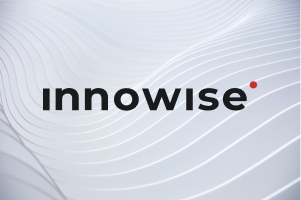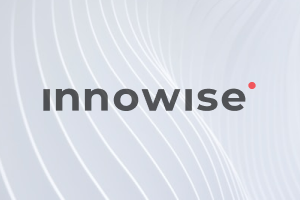Votre message a été envoyé.
Nous traiterons votre demande et vous contacterons dès que possible.
Le formulaire a été soumis avec succès.
Vous trouverez de plus amples informations dans votre boîte aux lettres.

Sélection de la langue


In 2025, IT staff augmentation is the norm in tech, and for a good reason. Statista reports that recruiters often can’t find qualified developers, struggle to match candidates to job requirements, and have to do it all within tight deadlines. IT staff augmentation can resolve all these issues almost immediately, and that’s why the analysts expect 13.7% annual growth of the IT staffing market by 2033.
In this article, I’ll detail the advantages of IT staff augmentation, when this model shines, and when it doesn’t, to help you make the best decision for your business.
IT staff augmentation is about extending your engineering team with external developers who work within your environment, follow your process, and ship code alongside your people. If you opened this page, chances are you already have an idea what IT staff augmentation is. But I want us to be on the same page before we get into the details.
From my experience, companies generally turn to augmentation because — on top of convenience — it solves pressing business problems. For instance, when you can’t hire fast enough or need rare skills, the top benefits of IT staff augmentation services become crystal clear. Check out the list of advantages that stem from dozens of Innowise’s successful projects.
With augmentation, you’re not spending months skimming through resumes, running interviews, evaluating tech proficiency, and negotiating contracts. You get engineers who can start in a matter of days and bring you results in weeks. As a practical example: Innowise’s tech experts join the projects in 3–5 days on average. Now compare it with in-house hires that typically take 4–6 weeks.
Sometimes tech projects get unpredictable, and you don’t always have expertise in-house. Especially when we’re talking about niche platforms or emerging techs. Nearshore staff augmentation companies, on the other hand, have a global talent pool access and can ship you specialists with rare tech stacks. If you work with Innowise, varied IT expertise is always at your fingertips: anything from AI and cloud to Python and SAP.
Hiring full-time means salaries, benefits, office space, and a long-term commitment. When augmenting the team, you pay only for the hours spent on the actual work, no more, no less. That’s where the cost advantages of IT staff augmentation start to show: you keep budgets lean and still get things done.
With augmentation, the work happens in your repos, under your SDLC, with your review gates and processes. You set priorities and standards; outsourced engineers plug in and follow them to a T. Unlike full project outsourcing, you directly manage the team and know exactly what‘s happening, and can spot what stalls the delivery.
Need three seniors for a month and one afterward? You can scale the team up when deadlines spike and scale down when the pressure eases. It lets you flex capacity with the workload, avoid idle salaries, and keep up with the accelerated project timelines. One of our clients did just that: they hired a Flutter engineer to strengthen their gym membership app development team. And, once the busy season was over, they parted ways — as easy as that.
If a key engineer leaves mid-sprint or a surprise skill gap appears, you can pull from the vendor’s bench of engineers who are ready to fill gaps quickly. Plus, as you’re already working with outstaffed engineers, they can make the onboarding of new ones much easier. Most likely, you won’t get this level of continuity and risk mitigation any other way without missing the deadlines.
Not only do you find candidates faster, but you also don’t have to handle paperwork for hiring in-house. Augmentation removes the need for handling employment contracts, payroll, employee onboarding, and performance reviews. Your HR team can focus on strategic, long-term roles, and the delivery team gets contributors sooner.
When new people enter your team, even for a short period of time, they inevitably bring new ideas and fresh perspectives on what you already have. Working together with the internal development team, they exchange ideas, share knowledge, and discuss new tools or best practices. Ultimately, your in-house staff becomes stronger from working together with people with varied tech backgrounds.
Not every scenario plays out perfectly with this model. There are real pros and cons of staff augmentation, and my job is to lay them out so you can decide what works for you.

| Augmentation du personnel | Services gérés | Équipe dédiée | Externalisation de projets | |
| Ownership | You own the roadmap, repos, and priorities; external engineers follow your process. | Vendor owns outcomes in a defined domain (e.g., monitoring, support). | Shared: you steer priorities, vendor handles staffing and daily management. | Vendor owns delivery from scope to final output. |
| Vitesse | Fastest: vetted engineers can join in days. | Moderate: onboarding depends on service setup and integration. | Moderate: setup takes weeks to align management and delivery flow. | Slowest: requires detailed scoping, contracts, and kickoff. |
| Cost predictability | Variable, pay-as-you-go; usually uses the T&M model. | Fixed monthly or annual fees; predictable but less flexible. | Monthly rate per team; predictable if the scope is stable. | If fixed price: predictable, but the scope is rigid. If T&M: flexible but less predictable. |
| Risque | Low delivery risk if the project is well managed internally. | Vendor is accountable for SLAs and uptime; your risk is vendor lock-in. | Your risk is delivery scope creep. | Vendor carries delivery risk, but you risk misalignment if the scope evolves. |
| Meilleur pour | Teams with strong PM/tech leads who need extra capacity fast. | Ongoing, repetitive functions, 24/7 support and global coverage. | Long-term product builds where you want a stable, semi-autonomous team. | Clear, fixed-scope projects where you prefer to outsource outcomes. |
When you’ve decided staff augmentation is the right move, the next question is which type will actually work for your business.
Yes, especially when you need skills fast and you don’t plan to keep them long term. Basically, it means improved resource allocation, less recruitment and retention expenses. You get the tasks covered, plus get enhanced internal team focus because they don’t have to put out fires non-stop.
Augmented engineers can join the project within 3–5 days and start delivering results in the first weeks. Because they follow your toolchain and processes (e.g., Agile methodologies), onboarding is short.
If you want outcome-based delivery with one party accountable for the entire scope, managed or outsourced models are better. Staff augmentation works best when you need more hands following your instructions.
At Innowise, we align with GDPR and HIPAA where required, run projects under secure SDLC practices, enforce access control, and follow ISO 27001 and SOC 2 standards.
Dmitry dirige la stratégie technologique derrière les solutions personnalisées qui fonctionnent réellement pour les clients - aujourd'hui et au fur et à mesure de leur croissance. Il fait le lien entre la vision d'ensemble et l'exécution pratique, s'assurant que chaque construction est intelligente, évolutive et alignée sur l'entreprise.












Votre message a été envoyé.
Nous traiterons votre demande et vous contacterons dès que possible.

En vous inscrivant, vous acceptez notre Politique de confidentialitéy compris l'utilisation de cookies et le transfert de vos informations personnelles.